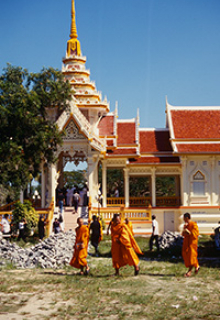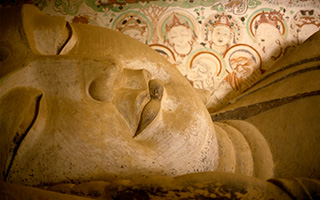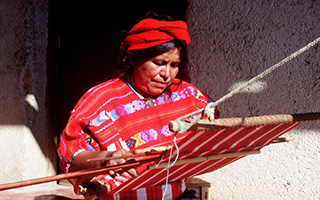We have more than 230 000 b/w and colour slides, negatives and photographic prints of different sizes and base materials, dated from the 1930s to the present. These images are captured mainly by ICCROM staff during missions to cultural heritage assets. They include pictures of training activities, such as courses, workshops, seminars and lectures, and other events, such as conferences, exhibitions and institutional meetings of ICCROM's governing bodies, including its General Assembly, Council and Bureau.
The historical and scientific value of these archives is significantly enhanced by the fact that some of the depicted monuments, sites and objects no longer exist (such as the destroyed Bamiyan Buddhas in Afghanistan) or have undergone profound changes (such as the Abu Simbel Temple in Egypt, displaced from its original location during the construction of the Aswan Dam in Nubia.)
Main photographic archives by creator/collector:
- ICCROM historical photographic collection: Approximately 20 000 photographs and photo albums from the 1930s to the 2000s depict worldwide heritage sites, monuments and objects, such as Tassili rock art (Algeria); Nefertari's tomb (Egypt); Gondar (Ethiopia); Acropolis, Athens (Greece); Hatra in Nineveh (Iraq); Basilica of San Marco, Roman Forum, Basilica of Assisi (Italy); Mohenjo-Daro (Pakistan); Humor Monastery (Romania); Kerkouane (Tunisia); Göreme (Turkey); etc. They also document the destructive effects of emergencies, such as the Florence and Venice floods and the earthquake in Friuli (Italy). It also includes the Harold J. Plenderleith slide collection, which is composed of approximately 400 b/w slides (5x5), mostly on glass, taken probably between the 1930s and 1950s. The slides depict museum objects before and after restoration (some of which were used for his well-known book, The Conservation of Antiquities and Works of Art, 1956), as well as a wartime repository for the protection of works of art in England during World War II.
- Alejandro Alva Balderrama photographic archive: Approximately 12 000 photographs from 1953 to 1998 depicting earthen architectural and archaeological heritage, including materials and building techniques, and ICCROM's GAIA and TERRA projects on the Preservation of Earthen Architectural Heritage. Particularly valuable are the photographs depicting Peruvian earthen heritage in the 1970s.
- Jukka Jokilehto photographic archive: Approximately 47 000 photographs from 1969 to 2003 depicting heritage buildings and sites from over 60 countries in all continents, as well as a series of lectures on the history of conservation and images used for his outstanding publication History of Architectural Conservation.
- Herb Stovel photographic archive: Approximately 65 000 photographs from 1969 to 2004 depicting urban areas, cities and sites from over 46 countries, as well as World Heritage Bureau and Committee meetings, ICOMOS evaluation missions and ICCROM's International Courses and Workshops related to the ITUC (Integrated Training on Urban Conservation) Programme.
- Gaël de Guichen photographic archive: Approximately 16 000 photographs from 1963 to 2006 depicting the deterioration of museum objects on different materials (wood, paper, stone, etc.) due to the effect of light, climate and other factors; exhibition, display and storage of artefacts; prehistoric rock paintings (Lascaux, Altamira, etc.); ICCROM courses, missions and exhibitions; and his lectures and conferences on preventive conservation.
- Rodolfo Luján-Lunsford photographic archive: Approximately 20 500 photographs from 1960–2010 depicting his missions and lectures, as well as restoration activities on mural painting heritage in more than 30 countries, among them: Bhutan, Cambodia, China, Ethiopia, Greece, Guatemala, India, Italy, Korea DPR, Laos, Lebanon, Mongolia, Myanmar, Nepal, Thailand and Turkey.
- Peter Rockwell photographic archive: Approximately 31 200 photographs from 1967-2007 depicting the historical evolution of the stone carving techniques, stone quarries and restoration workshops in Turkey (Aphrodisias archaeological site) and Italy (Trajan's column, Trevi Fountain, Fountain of the Four Rivers, Parma Cathedral and Baptistery, etc.). Photographs of his own work as a sculptor and the work of his father, Norman Rockwell, a famous American painter and illustrator, are also part of the collection.
Only 10 percent of ICCROM's photographic collection is digitized. Archival processing is needed, as well as the development of a digitization project to allow their accessibility to scholars and researchers.



